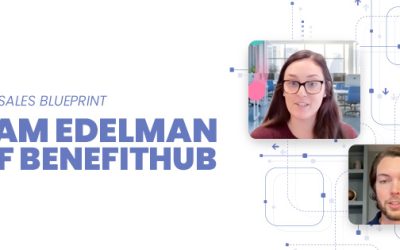In today’s fast-paced media environment, ad revenue is only as strong as the system behind it. If your team is still juggling spreadsheets, legacy tools, and fragmented workflows, it’s time to rethink your ad sales strategy.
Modern ad operations software and ad sales software help publishers streamline every part of the campaign lifecycle — from proposal to payment — so teams can sell smarter and scale faster.
Here’s how the right platform can transform your sales process, and what to look for when choosing one.
Why Your Ad Sales Strategy Needs an Upgrade
Advertising isn’t getting simpler. With more channels, more formats, and more pressure to prove performance, legacy systems just can’t keep up.
A strong ad sales strategy today requires:
- Real-time inventory access
- Integrated proposal and order workflows
- Seamless campaign handoff between sales, ops, and finance
- Clean, accurate reporting and billing
If your team is relying on disconnected ad ops tools, you’re not just slowing down — you’re losing deals and missing revenue.
In an era where buyers expect quick turnaround, unified packaging, and measurable results, operational bottlenecks hurt your ability to compete. Advertisers aren’t waiting weeks for proposals or invoices. And neither should you.
What Is Ad Operations Software?
At its core, ad operations software (or ad ops tools) is designed to help manage and automate the delivery of digital advertising campaigns. It connects your CRM, OMS, ad server, billing, and reporting systems — turning chaos into clarity.
The best platforms go beyond basic trafficking. They handle:
- Proposal generation and approvals
- Order management across formats (web, podcast, newsletter, etc.)
- Integration with ad servers and ad tags
- Inventory tracking by ad unit and channel
- Billing reconciliation and invoicing
- Reporting dashboards for pacing, performance, and revenue
Instead of treating each step in isolation, modern platforms stitch together every stage of the deal lifecycle — from forecast to fulfillment.
Features to Look for in Advertising Sales Software
Whether you’re evaluating new tools or just building a business case for change, here are key features your advertising sales software should include:
1. Multi-Channel Inventory Support
You should be able to manage and sell across display, audio, video, events, print, and more — all from one platform. Your buyers don’t care that your systems are disconnected. They just want a single campaign that works.
2. Real-Time Availability
Stop overselling or double-booking. A good system gives reps real-time visibility into what’s available, what’s sold, and what’s pending.
3. Rate Card and Discount Logic
Create custom pricing rules by product, package, or customer tier. Built-in controls help standardize your ad sales strategy while allowing flexibility where needed.
4. Native Integrations
Seamless connections to ad servers (like GAM and Broadstreet), CRMs, and accounting software reduce manual entry and eliminate costly errors.
5. Billing and Reconciliation Tools
Don’t let billing delays derail your cash flow. Automated reconciliation tools help you match delivery with orders, so invoices go out fast — and disputes go down.
6. User Roles and Permissions
Not everyone needs access to everything. Segment features and approvals by user type to keep workflows tight and accountable.
7. Custom Reporting and Dashboards
Make it easy for sales leaders, ops managers, and finance teams to track what matters most — whether it’s pacing, pipeline, or revenue by format.
Why It Matters for Publishers
The right ad sales software isn’t just about selling more. It’s about selling with less friction, better margins, and stronger results.
Here’s what a modern platform unlocks:
- Faster campaign launches with fewer handoffs
- Reduced makegoods and billing disputes
- Better cross-team coordination
- Visibility into what’s working (and what’s not)
- Higher close rates through smarter quoting and inventory access
It also sets you up to grow. Whether you’re expanding to new channels, onboarding new reps, or launching bundled media packages, the right platform makes scale possible.
And let’s not forget the client experience. Buyers appreciate quick answers, clean proposals, and clear timelines. The right software helps you deliver all three.
Who Benefits from Ad Ops Automation?
Workflow automation is no longer just a nice-to-have — it’s the standard for revenue-focused teams. Here’s who gains the most:
- Sales Reps: Spend less time re-entering data and more time closing deals.
- Ad Ops Teams: Get complete orders with fewer errors. Launch faster.
- Finance Teams: Gain billing clarity and reduce time spent resolving discrepancies.
- Leadership: See performance across teams, campaigns, and formats — all in one place.
For companies dealing with high ad volume, recurring buys, or custom campaigns, automation reduces pressure and supports consistency at scale.
Transitioning from Legacy Systems
Moving to a new system can feel daunting — but it doesn’t have to be. Look for a platform that offers:
- White-glove onboarding and data migration support
- Role-based permissions and team-specific views
- Flexible workflows that adapt to your current process
- Reporting you can actually use
Start small if needed. Pilot the tool with one team or vertical. Gather feedback. Then scale it across the org.
Final Takeaway: Choose Software That Sells With You
Ad sales is no longer just about hustle — it’s about alignment. And if your systems aren’t aligned, your team can’t move at the speed your buyers expect.
Smart, scalable ad operations software helps you simplify your sales process, eliminate errors, and unlock revenue growth — without adding headcount.
If your goal is to modernize your ad sales strategy and build a system that actually supports your team, it’s time to look for tools built for today’s media business — not yesterday’s.



